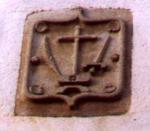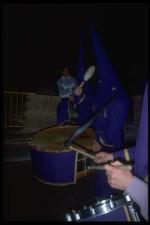

|
The Spanish InquisitionOne of the darkest hours in Spain's reputation is the story of the Spanish Inquisition. Originally founded by the papacy in the middle ages to fight heresies such as the Cathars and the Waldensians (who may well not have believed what the modern -evangelical- Waldensians hold to), the institution virtually died out during the 15th century. The original heresies, largely in southern France, but spreading over into Catalonia and Aragon, as well as other European regions, were all but extinct. The Cathars, by far the greatest threat politically, had been defeated. The Waldensians survived in pockets in the valleys of Savoy, particularly Aosta and to a lesser extent in the Durance valley in Provence. However, when Ferdinand of Aragon married Isabella of Castille, they set out on a crusade to rid Spain of the last vestiges of the muslim rule, seated in the Andalusian city of Granada, together with all other non-Catholics. Thus initially the Inquisition as we know of it was effectively re-founded with the outward goal to protect the (Catholic) faith. Inwardly, the goal was much more political. It was considered that muslims had their own political agenda which was incompatible with harmonious cohabitation under one crown, despite the fact that until the advent of "the Catholic Kings", the rulers of christian Spain had been known as the "kings of the three religions" and that Christians and Jews had been at least tolerated in muslim Spain. It is clear, to put this point of view into context, that the Mosaic law itself clearly asserts that no foreign religion should be allowed in the territories of God's people. The entire Old Testament shows how indifference to this aspect of the law led to the downfall of the Israelite monarchy and independence. While most empires allowed the different races and people groups to practice their own religion, the 800 year long struggle between Islam and Christendom up to 1500 had led to the concept which in Germany following the Reformation came to be regarded as 'one prince, one religion'. In these circumstances, the main difference between what went on elsewhere and what happened in Spain and its empire, was the extent to which this concept was taken, leading to the creation of an efficient secret police who brought 'guilty' people to summary trials and executions. And in particular, the extent to which burning at the stake became the symbol of overpowering state control over even the thoughts of its citizens. Compared to tribunals of its day, the Inquisition was not excessively unfair. The accused did not know what they were accused of until sentenced. They had to guess. Yet they were called to present their case in the court and given the opportunity to defend themselves. Informants did not need to be revealed, but someone needed to have denounced someone else of something. The reward for such denunciation was often a share of the accused's property. Thus a neighbour who didn't like the way you behaved could accuse you of witchcraft or heresy and thus be rewarded with your property. Elsewhere in the world -to this day- people have been executed with no trial at all. The deeds of northern Europeans in N. America are as awful as those of the Spaniards in the south; the acts of the British in India, Hitler's Germany or Tsarist and Communist Russia may well have all been worse. However, it is no excuse to prove that others are worse than we are. Currently, there is a movement to clear the reputation of the inquisition of its bad name. Historians such as Henry Kamen have written glowing biographies of Phillip II and other books on the period. Within the Catholic church, there exists a lobby to canonise Queen Isabella. It is very possible that their campaign will be successful during 2004, as November marks the 500th anniversary of Isabella's death. You can see their page at: http://www.queenisabel.comAnd if that is persuasive, you could always take a look at the other point of view, as written by John Foxe, (1517-1587) in his famous Book of Martyrs: http://www.gospelweb.net/foxe16.htm relates the situation in England during the reign of Mary, wife of Phillip II, while in chapter 5 he relates some of what went on in Spain itself http://www.gospelweb.net/foxe5.htm More can be read about this in Spanish at: http://www.protestantes.net And finally, a nominal Catholic and Spaniard, Miguel Delibes, has written a stunning, if in places lewd novel relating the story of one person who suffered at the hands of the Inquisition. "EL Hereje", now translated into many languages (The Heretic), describes the horrors of the trial and burning of a protestant. It's just a pity that Delibes clearly did not understand the doctrines which caused people to be willing to go through such suffering and the hope which carried them towards their heavenly home. While not so many people may have died at the stake, many were investigated, suffering exile or imprisonment for matters of conscience. A good number, such as the translators of the Bible, Casiodoro de Reina and Cipriano de Valera, were burned in effigy in their absence. I dare say no one has the truth about this issue, but it is certainly arguable that the Inquisition had significant negative effects on the development of thought and culture in general in Spain, in addition to the specific issue of keeping protestantism, as well as judaism and islam at bay. And as the first link shows, it is still being praised today by elements within the Catholic church. INQUISITION NOVEL SHORTLISTED FOR PRIZESevilla, June 9th, 2003. Its author, Eva Díaz, says the book "is about the fascinating 16th century" which produced humanist and Renaissance movements for change and the intolerance of the Catholic Inquisition in a city, Seville, known for its "opulence and idolatry of sacred objects" and a centre of the Roman Counter-Reformation. The book's plot, based on real events, looks at the times through the eyes of a group of reformers who met secretly. Many of them were aristocrats and clerics, and Díaz writes about the difficulties encountered by men such as Bible translators Casiodoro de la Reina and Antonio Corro. Both were forced to flee Seville and Spain into exile when their beliefs and work was discovered by the Inquisition. The pair were monks at San Isidoro monastery just outside Seville which, as Díaz points out, "was the only monastery in which there were Protestants." Fuente: Europa Press. Redacción: ICPRESS Another novel which tells the story of the Inquisition, this time based in Valladolid and the other great Auto de Fe, is 'The Heretic' by Miguel Delibes, a nominal Roman-Catholic and top selling Spanish novellist. The description of the burning is horrific. Some scenes are less appealing to the puritanical minded! |

